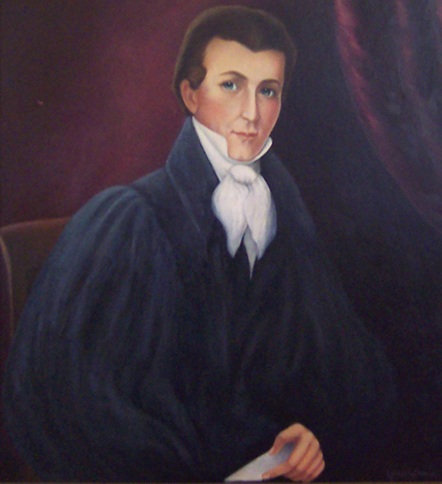
Memucan Hunt (1807-1856) left a prosperous business to come to Texas with hopes of seeing action in the Texas Revolution. Instead, his statesmanship helped Texas to gain U. S. recognition, and later he served as the Secretary of the Texas Navy. Hunt County was named in his honor. (Wikipedia)
The first session of the Texas State Legislature handled more decisions with less arguing than most sessions since then. Those men, yes there were no women elected to any office in 1846, not only set up the legal systems in the new state, created state laws, but they were charged with laying out thirty-one brand new counties.
Smaller counties meant more settlers could register new land acquisitions, pay taxes, and have access to law enforcement closer to home. The Republic of Texas had a limited number of counties, thanks to the wording of its Constitution. By 1845 there were only thirty-six county governments in the whole nation.
For most of March and April 1846, the House of Representatives carved out new counties from existing ones. Once the new legislation was read three times and passed, it was sent to the Senate for approval. When the legislative process was finished the bill was sent to the governor, James Pickney Henderson, for his signature.
Most names for the first thirty-one new counties were in honor of three rivers, the current governor, two vice-presidents of the Republic and numerous other men involved either with the Republic or the Annexation of Texas to the United States. Memucan Hunt was such a person.
Hunt was born in 1807 in North Carolina where he made a name for himself and a large fortune as a planter and a businessman. In 1834 he moved to Mississippi where he briefly resided before learning about the Texas Revolution. Intent on volunteering he arrived at San Jacinto after the battle was over.
He was a clever, articulate man with many friends. Texas leaders found a job for him quickly. He went to Washington as an appointed agent to the United States to work with William H. Wharton in securing recognition for Texas. The two men accomplished their goal in March 1837. Instead of returning to Texas, he proposed annexation in 1837, only to have it rejected by Congress and President Martin Van Buren. The following year he negotiated a boundary convention with the United States.
During President Lamar’s term Hunt continued his work on the boundary commission. In 1841 he returned to Texas where he ran unsuccessfully for Vice-President of Texas. He continued to work to arbitrate Texas and U. S. boundaries. For compensation he was rewarded with a large area of land in McCulloch, Runnels, Concho, San Saba, and Mason counties. Hunt died in 1856 while visiting his brother in Tennessee. At the time he was pushing for a railroad to connect Galveston Bay and the Red River.
Recently a lady from Virginia was looking through files in the National Archives and the U. S. Navy Memorial Heritage Center in Washington, D. C. when she found records pertaining to Memucan Hunt’s stay at the Texas Legation. At that time, Washington was a rather primitive town where visitors, government officials, and others resided in a boarding houses. Hunt stayed at Mrs. Page’s, a boarding house across Pennsylvania Avenue from Centre Market, now the site of the National Archives. Of course, all the old boarding houses are gone, much too disrespectful for the United States capital today.
